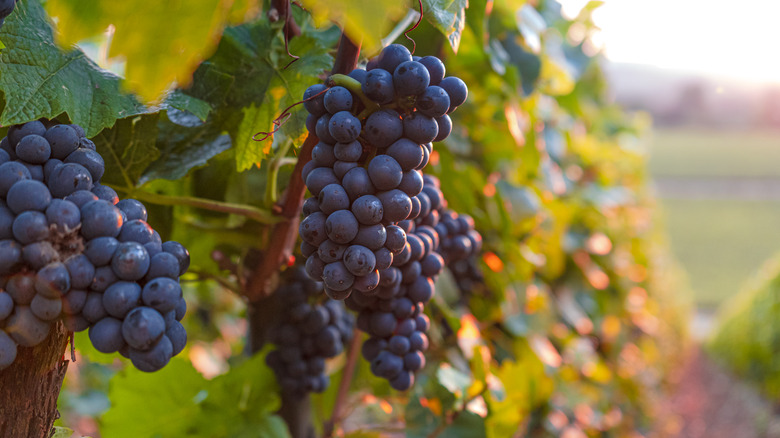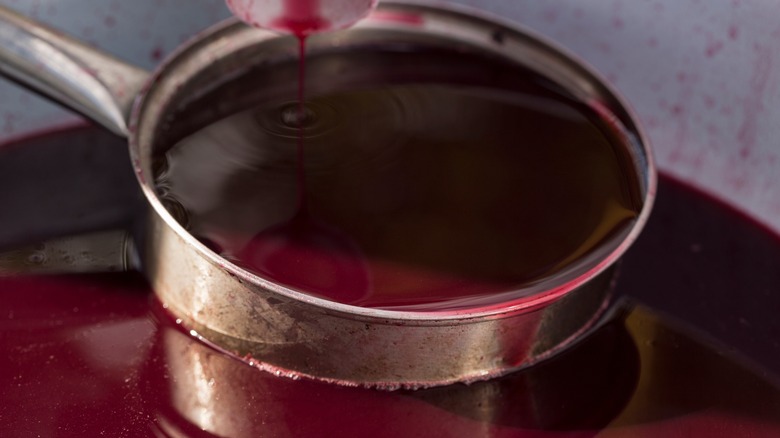Grape Must: The First Juicy Step Of The Winemaking Process
Maybe you've peppered the wine terms "minerality" or "electricity" into a fabulous monologue at a wine-tasting party. If so, congratulations! But even more than terroir, one of the biggest defining elements of a wine's characteristics is the grape must. In other words, grape must is "a must" — both for your next vino-centric conversation and for the glass in your hand.
Grape "must" isn't its aroma. It's the freshly pressed grape juice that gets fermented and turned into wine. The word derives from the Latin vinum mustum, meaning "young wine," as must is the pressed grapes in their most natural form without any sweeteners, yeast, or alcohol. Before fermentation, it isn't wine, and before straining, it isn't juice.
A foundational element of ultra-thick grape must is the sediments that float through it. These solid parts, including seeds, stems, and skins, are called pomace, and the pomace gets soaked in the juice during the maceration process. It is then removed from the juice, which will ferment sans-pomace. In fact, the difference between red, white, and rose wines is their degree of skin contact, which refers to how long the pomace is left in during maceration. Pomace provides winemakers with all of the raw materials they need to create a batch of wine. Although, overexposure can result in inedible bitterness; must is a powerful tool. But what happens to that sweet, viscous, flavorful pomace after it gets strained out of the juice?
Raw pressed grape juice with sediments is a must -- literally
Must isn't abandoned at the fermentation step. This rich, concentrated strained-off byproduct is called Süssreserve, and a small portion of the Süssreserve gets added back into the juice post-fermentation as a sweetener. The remaining liquid makes an excellent fertilizer in vineyard soil — keep an eye out for a smatter of dark red solids lying atop the soil on your next winery tour. Some winemakers even stir a dollop of the grape must with a glass of water to make a flavorful natural wine beverage.
Even though grape "must" doesn't directly refer to a wine's fragrance, it plays a crucial role in determining the overall profile. The aroma, color, flavor, potency, and sweetness level of your favorite varieties are all determined by grape must at the conceptional winemaking step. It's not enough for grape must to simply exist either. Must holds the chemical compounds and sugars essential to winemaking, and it's the job of the winemaker to balance controlled levels of pH/TA, structure (i.e. short chain versus long chain tannins), and sugar content for both sweetness and alcohol production. For example, red wine typically has a pH between 3.4–3.7 and a titratable acidity of 6.0–7.0 grams per liter, while white wine clocks in around pH 3.2–3.5, and TA 6.0–9.0 g/L.
Winemaking is as much an art as a science, and grape must (surprise) is essential to the quality of a finished batch.

